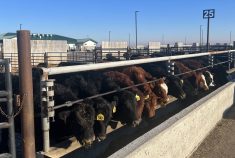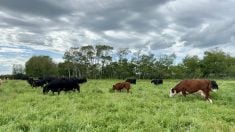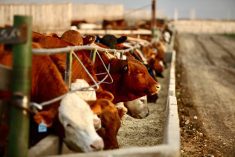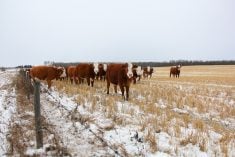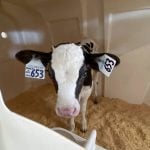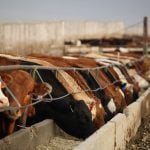In my previous column, I discussed how pregnant beef cows prioritize nutrient use for different physiological functions, including maintenance, lactation, pregnancy and growth. For those of you in Western Canada who were feeding cows during the last half of December 2021, you know full well how the cow’s maintenance requirements increase during extremely cold weather. Many of you proactively increased the quality or quantity of feed provided. Failure to do so would have nutritionally stressed the cows and resulted in the mobilization of fat and loss of body condition.
Read Also
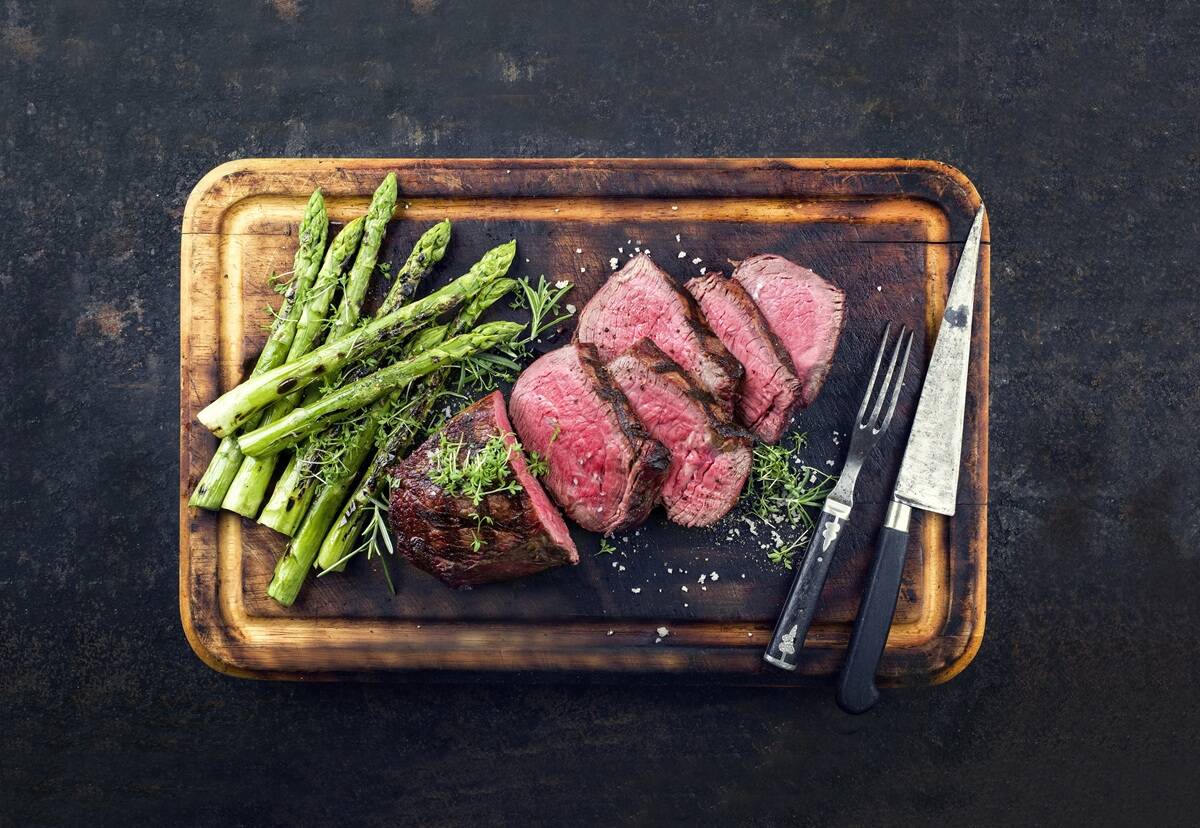
Building demand together: The impact of Canada’s beef import levy
The beef import levy has become a central tool for ensuring balance in Canada’s beef industry
As we move forward, hopefully the weather co-operates and such severe cold stress becomes a distant memory. We do, however, need to keep our eye on the ball in terms of adjusting feeding programs to meet the needs of pregnancy, particularly as the herd enters the last trimester. With this month’s column, I want to look at how nutrient requirements change with the pregnancy stage and what steps one needs to take to successfully adapt the ration to meet late gestation requirements.
As I also mentioned in my last column, mature cows in mid-gestation (i.e. four to six months pregnant) are basically eating to meet maintenance requirements. At this stage of pregnancy, the developing fetus is relatively small and places minimal demands on the dam in terms of nutrients for its development. As the cow moves into the last trimester, particularly the last six to eight weeks before calving, this picture changes dramatically. To illustrate, let’s compare the nutrient requirements of a 1,400-pound cow at five months of gestation with those of the same animal at eight months of gestation, using Alberta Agriculture’s Cowbytes program.
In the former case, assuming our cow is experiencing non-stressful environmental conditions (i.e. adapted to -15 C to -20 C), she requires just over 14 pounds of total digestible nutrients (TDN) and 1.5 pounds of protein per day. If our cow is eating at two per cent of body weight or 28 pounds of dry matter, the ration needs to be formulated to 52 per cent TDN to meet maintenance energy requirements and a minimum of 6.5 to seven per cent crude protein. These requirements can be met by a combination of good-quality cereal silage and a poorer-quality forage such as straw or by feeding a medium-quality grass hay (i.e. 52 per cent TDN; seven to nine per cent CP) or similar forage. In terms of calcium and phosphorus, this cow requires 20 grams of calcium and 15 grams of phosphorus daily.
Examining her requirements at eight months of gestation under the same conditions, her TDN requirement increases to 16 pounds while her protein requirement increases to 1.9 pounds or respective daily increases of 14 and 18 per cent. Similarly, calcium and phosphorus requirements increase by 45 and 33 per cent, respectively. If we look at requirements during the ninth month of pregnancy, we see that TDN requirements increase by an additional six per cent while protein requirements increase by another 17 per cent.
As with the effect of cold stress discussed above, if the ration is not adjusted to meet the increased nutrient requirements of the last trimester, the dam will take it upon herself to meet fetal demand for nutrients. This includes mobilizing body fat, muscle and skeletal mineral stores. The immediate consequence is a loss of body weight, the degree of which can have a variety of longer-term consequences including abortion, reduced calf birth weights, poor calf and dam health and failure to return to estrus in a timely fashion.
Also, keep in mind that the impacts of environmental stress and pregnancy on the dam’s energy requirement are for the most part additive. Failure to adjust the feeding program if both factors are acting concurrently (i.e. cows experiencing prolonged cold stress 60 to 90 days pre-calving) will exacerbate the issues listed above.
It should be obvious that to prevent these issues, you must adapt your feeding program as your cows move into the last trimester of pregnancy. The question becomes how. One possible solution is to simply feed more of the existing ration which should provide an additional nutrient supply. However, most mid-gestation rations are fed ad libitum and comprise poorer-quality forages that are slowly fermented in the rumen. In this situation, providing more of the same will not necessarily provide for an increased nutrient supply and in the case of poorer-quality forages, you could be running the risk of rumen impaction. A better solution is to feed higher-quality feeds, that are more digestible and/or nutrient-dense. Consider our example cow that transitions from mid to late gestation. While a medium-quality grass hay at 52 per cent TDN and fed at two per cent of body weight (DM basis) may meet mid-gestation energy requirements, it does not meet those of late gestation. In contrast, a good-quality grass or alfalfa/grass hay at 58 to 60 per cent TDN and 11 per cent CP, more than meets requirements for mid-gestation and supplies sufficient energy and protein for late gestation. If a better-quality hay is not available, supplying two to four pounds of a cereal grain or more, depending on forage quality, will help to make up the energy deficit as well as supply additional protein.




